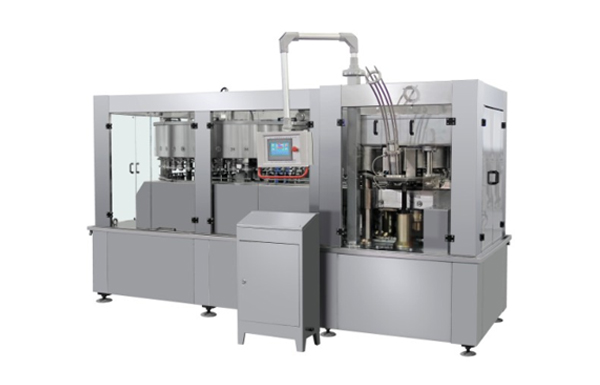According to the different items to be packaged, different filling machines should be selected for packaging. The following are some principles to be followed when choosing a liquid filling machine:
1. The principle of wide process range.
The technological scope of the filling machine refers to its ability to adapt to different production requirements. The wider the process range, the higher the utilization rate of the equipment, and the multi-use of one machine, that is, the use of the same equipment can fill multiple materials and multiple specifications. Therefore, in order to meet the production requirements of multiple varieties and specifications in the beverage and beverage industries, the filling machine with the widest process range should be selected.
2. The principle of high productivity and good product quality.
 When selecting the filling machine, the relevant factors should be considered in combination with the production process requirements. The level of productivity directly reflects the production capacity of the production line. So the higher the productivity, the better the economic benefits it produces. In order to improve product quality, a filling machine with high equipment accuracy and high degree of automation should be selected. However, the selling price of the equipment has also increased accordingly, increasing the unit cost of the product.
When selecting the filling machine, the relevant factors should be considered in combination with the production process requirements. The level of productivity directly reflects the production capacity of the production line. So the higher the productivity, the better the economic benefits it produces. In order to improve product quality, a filling machine with high equipment accuracy and high degree of automation should be selected. However, the selling price of the equipment has also increased accordingly, increasing the unit cost of the product.
3. The principle of serving the production process.
First of all, according to the nature of the filling material (viscosity, foaming, volatility, gas content, etc.), select the appropriate filling machine to meet the production process requirements. For example, in order to avoid the loss of volatile aromatic substances, the cups or normal pressure filling machine should be used for the wine with strong aroma. For the juice liquid, in order to reduce the contact with the air and ensure the product quality, it should generally be Vacuum juice filling machine. Secondly, the production capacity of the filling machine should be matched with the production capacity of the processing and packaging machinery before and after the process.
 简体中文
简体中文 English
English

